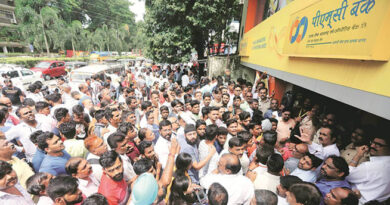Tackling Trade-Based Money Laundering in the Modern Financial Landscape
If we inquire informally among a group of bankersabout familiarity with terms like a Letter of Credit (L/C), Bill of entry (BoE), or Buyer’s Credit, only a few might possess this knowledge. This introduces us to the intricate world of trade finance—a realm filled with unique terminologies and practices, characterized by its complexity and specialization. It involves numerous parties, including intermediaries, banks, and a vast array of goods, commodities, and services that are part of the countless trade transactions banks process every day. The combination of escalating regulatory demands and the inherent complexity of trade has placed bankers in a challenging position. This article provides a comprehensive analysis of trade-based money laundering (TBML), delving into its mechanisms, implications, and countermeasures.
TBML involves the exploitation of international trade transactions to transfer value and obscure the origins of illicit proceeds. While international trade promotes economic growth around the world, international trade transactions face a range of risks and are vulnerable to abuse by criminal and terrorist organizations.Transnational criminal organizations and terrorist organizations use a variety of money laundering schemes to disguise the origin and destination of their illicit proceeds and integrate their assets in legitimate financial entities.
Black Market Peso Exchange, a well-known TBML scheme involves merchants who—wittingly or not—accept payment in illicitly derived funds, often from third parties to a trade transaction, for exports of goods. Various observers have noted that although TBML is a common form of international money laundering, it is also one of the least understood and most difficult to detect because of its complexity.
TBML schemes can also involve misrepresenting the price, quantity, or type of goods or services in trade transactions. In misrepresentation schemes, the parties involved in the trade transaction may under or over invoice goods or services; issue multiple invoices for the same goods or services; provide goods or services than the declared amount, including in some cases providing no goods or services; or falsely describe the types of goods or services provided. Through these types of misrepresentation, value can be transferred from one party to another, and the illicit origins of criminal proceeds obscured.
A Variety of Criminal and Terrorist Organizations Use TBML to Disguise the Origins of Their Illicit Proceeds and to Fund Their Operations:
Drug trafficking organizations: Drug trafficking organizations throughout Latin America, including in Colombia and Mexico, have used TBML schemes for decades to launder the proceeds from illegal drug sales.
Terrorist organizations: Terrorist organizations, including Hezbollah and the Revolutionary Armed Forces of Colombia (known by its Spanish acronym FARC), have also used TBML schemes to launder funds.
Corrupt government officials: In certain countries, senior government officials and government entities have used TBML schemes to disguise profits derived from corrupt practices.
Other criminal organizations: In addition to drug trafficking, criminal organizations have used TBML schemes to launder proceeds from a range of other crimes, including illegal mining, human trafficking, and the sale of counterfeit goods.
International Bodies Involved in Efforts to Combat TBML:
The Egmont Group: The Egmont Group, formed in 1995, is composed of FIUs from 164 jurisdictions. The organization seeks to foster information exchange among its members to support efforts to combat money laundering and terrorist financing. In addition, the Egmont Group provides training and technical assistance to its member FIUs. The Egmont Group’s Secretariat is in Canada.
Financial Action Task Force (FATF): FATF is an intergovernmental body, formed in 1989, that sets internationally recognized standards for developing AML/CFT regimes and assesses the ability of member jurisdictions to meet these standards.In addition, FATF works to identify specific money laundering methods and promotes international cooperation in disrupting and dismantling those money laundering schemes. The FATF Secretariat is in Paris, France.
United Nations Office on Drugs and Crime (UNODC): UNODC is an agency within the United Nations, formed in 1997, that works to combat illicit drugs and other international crime in more than 150 countries throughout the world. As part of its mandate, UNODC carries out the Global Program against Money Laundering, Proceeds of Crime, and the Financing of Terrorism. Through this program, UNODC seeks to strengthen the ability of United Nations member states to implement measures against money laundering and the financing of terrorism and to assist them in detecting, seizing, and confiscating illicit proceeds. UNODC is headquartered in Vienna, Austria and has field offices in 20 countries, as well as liaison offices in New York and Brussels, Belgium.
World Customs Organization (WCO): The WCO, established in 1952, is an intergovernmental body whose mission is to enhance the effectiveness and efficiency of customs administrations around the world and to help them in their dual role of facilitating international trade while also promoting security. WCO’s membership includes customs agencies from 183 countries. The WCO’s Secretariat is in Brussels, Belgium.
In India, Reserve Bank of India (RBI) has been working very hard toward formulating enhanced measures to tackle the issues around TBML. Some notable regulatory changes and guidelines issued in recent times impacting TBML include:
- The passing of the Undisclosed Foreign Income and Assets (Black Money) and Imposition of Tax Act, 2015 and Benami Transactions (Prohibition) Amendment Act, 2015. Clause 177 of the 2015 Finance Bill proposed to club all offenses underSection 132 of the Customs Act, such as false declarations, false documentation, etc., as offenses under the Prevention of Money Laundering Act (PMLA), 2002.
- Forming an elite panel to devise and solidify indicators (on classification of certain types of transactions), evaluate, and identify red flags, in the case of any misdemeanor.
- The Indian financial intelligence unit rolled out a new process mandating all banking and financial institutions to file formatted cross-border wire transfer reports for amounts exceeding INR 5 lakh.
Some of the key challenges to counter TBML are mentioned below:
- Ineffective implementation of KYC and CDD policy and procedures
- Non-identification of red flags and inadequate enhanced due diligence
- Delay in regulatory reporting
- Employees not adequately qualified or knowledgeable
- Ineffective internal controls framework
To safeguard themselves from these challenges, bankers need to consider the following key pillars of TBML preventive mechanisms:
- Policies and procedures—AML and compliance policies and procedures should contain a clear process for identifying and verifying the ultimate beneficial owner (UBO). All new and existing accounts are subject to verifying and identifying UBOs during account opening or KYC update processes.
- Identification of red flags—Bankers should timely identify the red flags to ensure timely escalation and investigation of the red flags identified.
- Qualified and trained staff— Employees that obtain identification and perform the verification of the UBO should be qualified and understand how to deal with legal entities and how to track the UBO in complex structures that may be in offshore jurisdictions (Cayman Islands, Panama, etc.).
- Quality control and quality audits— The tests and assessments conducted by quality control and auditors should be robust enough in assessing the weakness of current processes and the opportunities for control enhancement.
Conclusion:
If implemented effectively, these preventive measures will significantly contribute to the global fight against money laundering through trade-based money laundering (TBML). It is important to recognize that as economic growth accelerates, the significance of TBML escalates alongside the expansion of global trade. This has led to an increase in the volume of trade transactions processed by banks and financial institutions, presenting unique challenges in mitigating the diversion of funds into TBML channels.
In India, banks are confronting similar issues related to TBML. A primary concern is the inadequate collection of Know Your Customer (KYC) information and due diligence performed by operations staff at the time of account openings, during the execution of import-export transactions, and throughout ongoing monitoring processes. This gap in the due diligence process underscores the need for strengthened internal controls and compliance measures to effectively identify and prevent TBML activities.
Therefore, enhancing the Know Your Customer (KYC) and Customer Due Diligence (CDD) framework, with an emphasis on the identification and verification of Ultimate Beneficial Owners (UBOs), is crucial in combating money laundering through trade-based money laundering (TBML). Robust Anti-Money Laundering (AML) programs and comprehensive knowledge are essential to navigate the complexities of multi-layered and opaque offshore entities that are designed to obscure the identities of UBOs. The challenges include the need for specialized knowledge, qualified personnel, and robust compliance policies and procedures. Addressing these challenges both domestically and internationally is imperative for achieving meaningful progress against TBML activities.



